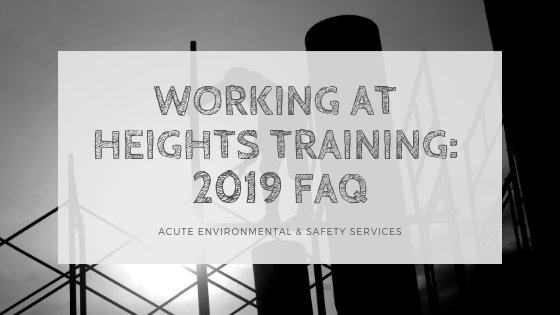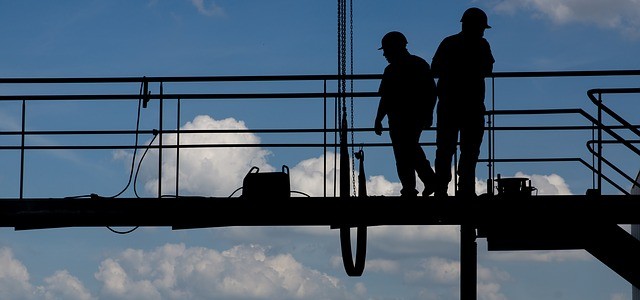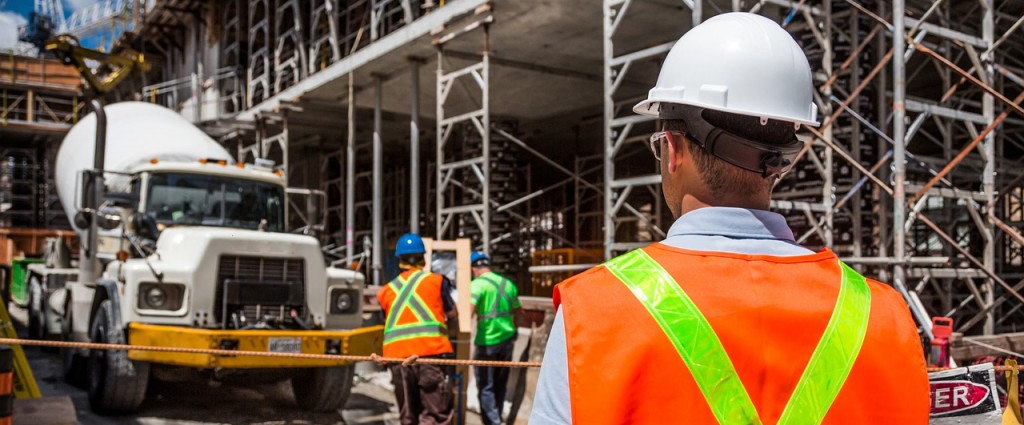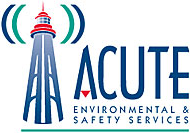
Do you have questions about Working At Heights training in Ontario? Acute Safety & Safety Services is here to help. Read on to discover our list of frequently asked questions, and have them answered for you! If you don’t see the answer to your specific question, or you need to sign up for Working at Heights Training, please don’t hesitate to contact ACUTE for more information!
Working at Heights Training: 2019 FAQ
Q: Who needs Working At Heights training?
A: Ontario workplaces are divided into legislated sectors, and each is governed by sector-specific regulations that outline training requirements. Ontario Regulation 213/91 – Construction Projects governs construction work, including work completed at heights. Working At Heights training is mandatory for any construction project workers who use any of the following methods of fall equipment:
- Travel restraint system
- Fall restricting system
- Fall arrest system
- Safety net
- Work belt OR safety belt
For more on training required for construction, click here.

Working At Heights training is mandatory for any construction project workers involved in fall hazards.
Q: Who is responsible for ensuring workers complete proper Working At Heights training?
A: It is the employer’s responsibility to ensure that workers complete a Chief Prevention Officer (CPO) approved Working At Heights training program delivered by a CPO-approved trainer before workers begin their assigned duties. For more information on Working At Heights training responsibilities, visit the Working At Heights Training page.
Q: What’s the purpose of Working at Heights training?
A: The purpose of a Working At Heights training program is fourfold:
- Strengthen workplace safety culture – By elevating the profile and importance of preventing falls from heights.
- Knowledge and Safety Practices – Provide workers who may be exposed to the hazard of falling with adequate knowledge about fall hazards and general safety practices to work safely at heights.
- Purpose and Use of Equipment – Provide workers who use personal fall protection equipment with sufficient knowledge about its purpose and use; and,
- Incident Reduction – Reduce the number of fall-from-heights incidents, injuries, and fatalities.

The Ultimate goal of Working at Heights training is to keep workers safe.
Q: How long is Working At Heights training valid for?
A: Working At Heights training is valid for three years after the completion date. After three years, workers are required to complete a Working At Heights refresher training course.
Q: How frequently do injuries occur on the job from working at heights?
In Ontario alone, there were 11,928 recorded injuries as a result of workplace falls in 2017, according to a report generated through the Workplace Safety and Insurance Board. That number was up from each of the two previous years and emphasizes the great importance of making sure your employees have the most hands-on and effective Working At Heights training.
Here’s a look at how those injuries are broken up by sector:
Working At Heights – Fall Statistics, 2017
- Services – 2868
- Health Care – 1253
- Construction – 1250
- Manufacturing – 1118
-

Statistics courtesy: http://www.wsibstatistics.ca/
- Transportation – 1035
- Food – 234
- Agriculture – 213
- Automotive – 212
- Education – 184
- Municipal – 174
- Chemicals/Process – 140
- Electrical – 79
- Mining – 37
- Forestry – 33
- Primary Metals – 22
- Pulp & Paper – 21
TOTAL FALLS = 11,928
As you can see, falls are not exclusive to construction, and if anyone will be working at heights, it’s important to get them trained – especially in the five sectors pictured above.
Q: What will you learn during a Working at Heights training course?
A: ACUTE’s Working at Heights training provides theory and hands-on practical training, as well as evaluation facilitated by highly skilled and competent instructors. Here’s a look at how the day would break down:
Working at Heights (Theory Module 3hr)
- Working at Heights (WAH) and legislation
- WAH hazards
- Safe Work Plans & assessing and controlling WAH hazards
- The hierarchy of controls – application to WAH
- Fall prevention strategies and systems
- Fall protection systems
- Ladder safety
- Written evaluation
Working at Heights (Practical Module – 3.5hr)
- Fall prevention/protection system requirements and limitations
- A-B-C component selection, inspection, use
- Harness inspection and fitting exercise & evaluation
- Lanyard inspection exercise and evaluation
- Travel restraint, fall arrest set-up exercise & evaluation
- 100% tie-off exercise and evaluation
- Ladders, scaffolds and elevating work platforms
- Rescue plan – components and purpose
- Safe work strategies and safe anchor exercise
- Written evaluation

You will receive practical and hands-on training with ACUTE.
Q: Are there alternatives for non-construction workers?
A: Yes. If you will be working at heights in a sector other than construction, consider the following:
This training course is geared towards those working at heights in Industrial Establishments, Mining Operations, Health Care and Residential Facilities sectors, or workplaces other than Construction Projects. This flexible training course can be modified to best suit your specific industry’s needs, and to address workplace specific equipment. This course includes hands-on training, detailed videos, handouts, quizzes, and classroom interaction with experienced instructors.
This course focuses on the dangers of working at heights from a scaffold or ladder, and how to prevent accidents and incidents. Our Scaffolding and Ladder course teaches participants how to work safely, including how to properly dismantle scaffolding after use. Participants will learn how to properly identify workplace hazards related to scaffolding and ladders, how to identify safe scaffold setups, how to identify different types of ladders, and understand legislation.

Trust ACUTE for your Working at Heights training!
With ACUTE, you will experience the best comprehensive, hands-on Working At Heights training.
Here are some ways that ACUTE goes beyond government compliance in Ontario health and safety training.
- Open Door Instructor-Student Partnersh
 ip: ACUTE’s training services emphasize client participation. Staff foster relationships with clients and serve as a touchstone for advice moving forward.
ip: ACUTE’s training services emphasize client participation. Staff foster relationships with clients and serve as a touchstone for advice moving forward. - Serving Your Team and Industry: With a vast array of clients in the manufacturing, construction, health, academic, and government sectors, ACUTE brings the best safety practices from across the spectrum to your workplace.
- 100 Years Combined Experience: ACUTE provides comprehensive health and safety training, on-site safety services, and consulting services. With over 100 years of combined experience, our staff offers more than theoretical or abstract ideas. ACUTE offers solutions.
- Track Record of Success: ACUTE is rated 4.9/5 stars on Google reviews, demonstrating a commitment to our clients, quality, and a passion for training.
Contact us today for quality training in your workplace or on-site at ACUTE’s proven training facilities!
